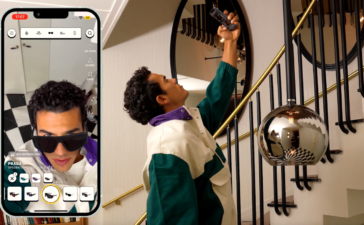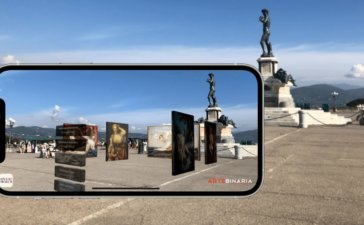Learning in AR: Bring Textbooks to Life With Ludenso
Augmented reality is exciting. It’s interactive and can be a great visual aid for information that might otherwise be difficult to visualize or that might be just plain dull in 2D. As such, it has huge potential for educators. Unfortunately, good AR content can also be difficult to make for people who aren’t experts. That’s where Ludenso comes in.
Ludenso works with textbook publishers, educators, and tech experts to create an app for augmenting textbooks with an easy-to-use interface. I talked with co-founder and Chief Marketing Officer, Ingrid Skrede, to learn more.
What Is Ludenso?
Ludenso gives educators low-and-no-code tools to bring augmented reality into the classroom. The company can and does work with educators and publishers to create models in-house, but they also make libraries of educational 3D assets available in a drag-and-drop interface.
“Bringing AR [textbooks] to life on mobile is not new. What’s new is the ability to view it and update it without technical expertise,” said Skrede. “We put the studio’s creative power into the hands of content experts, not just our development team.”

With a few keystrokes, educators with no AR development experience can add their own notations to existing 3D models that launch when a phone with the Ludenso Explore app recognizes images in a textbook. They can also add images, videos, or links – whether to more resources, online quizzes, or something else.
I saw this process in a screen share during a demo with Skrede but spent most of my time on the user side of the app. The app recognizes the target images instantly. Manipulating the model to scale and rotate it is easy, as is finding the annotations and contextual information that the educator (played by Skrede) attributed to it.
The app doesn’t only feature image detection, it also features planar detection. So, I can view a mini 3D model on the textbook page with the context of the words around it. I can also switch my view to place a 3D model in my office and scale it up as much as I want.
What’s more, once I’ve opened the models associated with a textbook, I can place them in my environment without the image target. So, a student could study the 3D models in a textbook chapter even if they left their textbook at school.
How Ludenso Inspires Learning
Of course, Ludenso isn’t just for educators – as no educational service should be. The application is also for students. Over the course of our remote interview, Skrede brought up numerous studies showing that AR helps students maintain attention and retain information.
More than that, Skrede says that working with Ludenso has put her in numerous positions to see “underperforming” students drawn into their lessons in ways that shocked their teachers.
“When we’re born, we want to learn. But, we have sixteen thousand hours of learning ahead of us and that’s a long time to sit and learn what everyone else is learning,” said Skrede. “When using AR, you’re challenging the perceptions teachers have and what it means to be a strong student.”
Living and Learning
Ludenso has been around for a couple of years now. The Oslo-based company is finally starting to get the buzz that it deserves, as well as a recently-cleared $1M funding round.
One of the pillars of Ludenso’s philosophy is that the best educational content is going to be made by educators – not by tech moguls. As a result, they started out working with schools directly. This was a great way to work directly with educators, as they wanted, but it came with its own challenges.

“We saw how excited the students were, and how excited the teachers were,” said Skrede. “We also realized that it’s challenging to scale in the school sector.”
Working with individual schools meant that Ludenso was working with individual curricula. What the company enabled one school to make might only work for that one school. Some of the tools that make the current (and upcoming) iteration of Ludenso possible were developed at this time, but the company’s outreach structure changed.
“We were rather fortunate to get in touch with a publishing house here,” said Skrede. The company is currently partnered with three major textbook publishers, which serve as a distribution channel for educators. “We’re interested in building a learning platform.”
Using textbooks to launch the experience also helps educators implement the technology that they might not be familiar with – particularly as a part of a structured curriculum.
“We go with textbooks because teachers want to use AR but they need a tool that they can come back to over and over,” said Skrede.
As this article was being written, Ludenso also announced a partnership with Cambridge University Press & Assessment. The partnership allows Cambridge University to carry Ludenso content and gives Ludenso global exposure with a renowned publishing company.
Where Was This a Decade Ago?
One of the most challenging things about covering emerging technology is seeing an application like Ludenso that would have been great to have when I was in school. At the same time, it helps to remind us why emerging technologies are so exciting. Most readers might have been born too late for this particular app, but there’s a whole generation that’s just in time.
Learning in AR: Bring Textbooks to Life With Ludenso Read More »
















